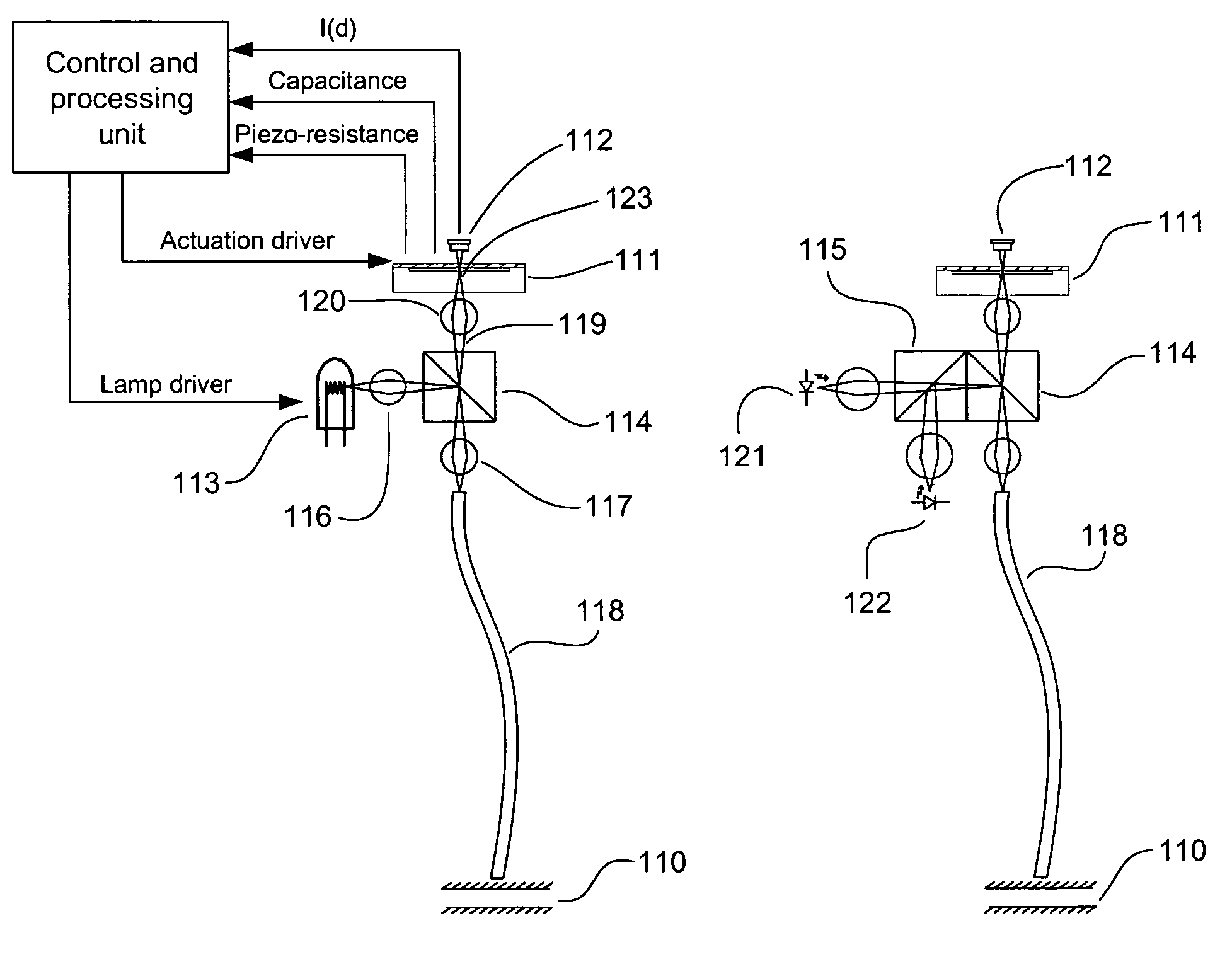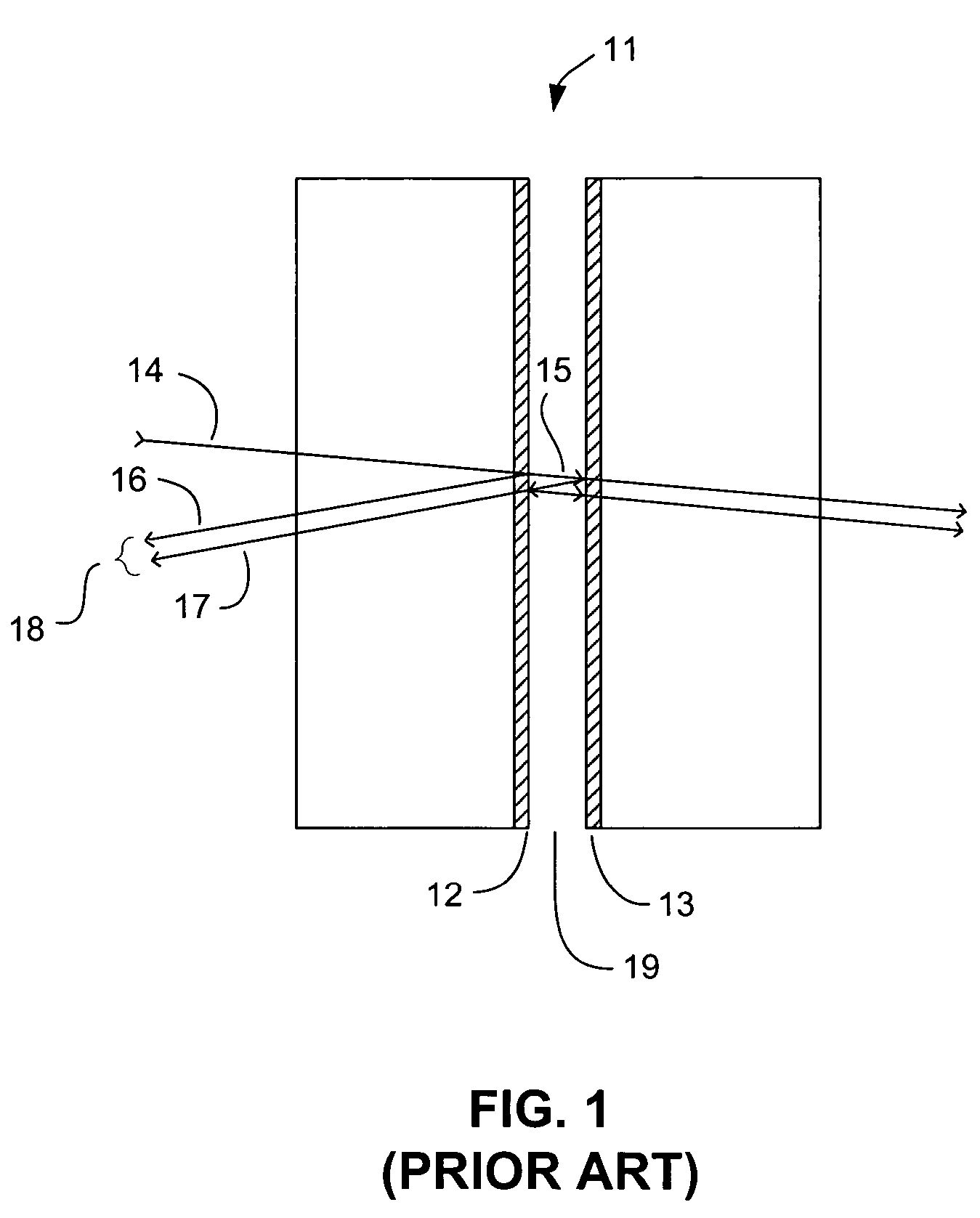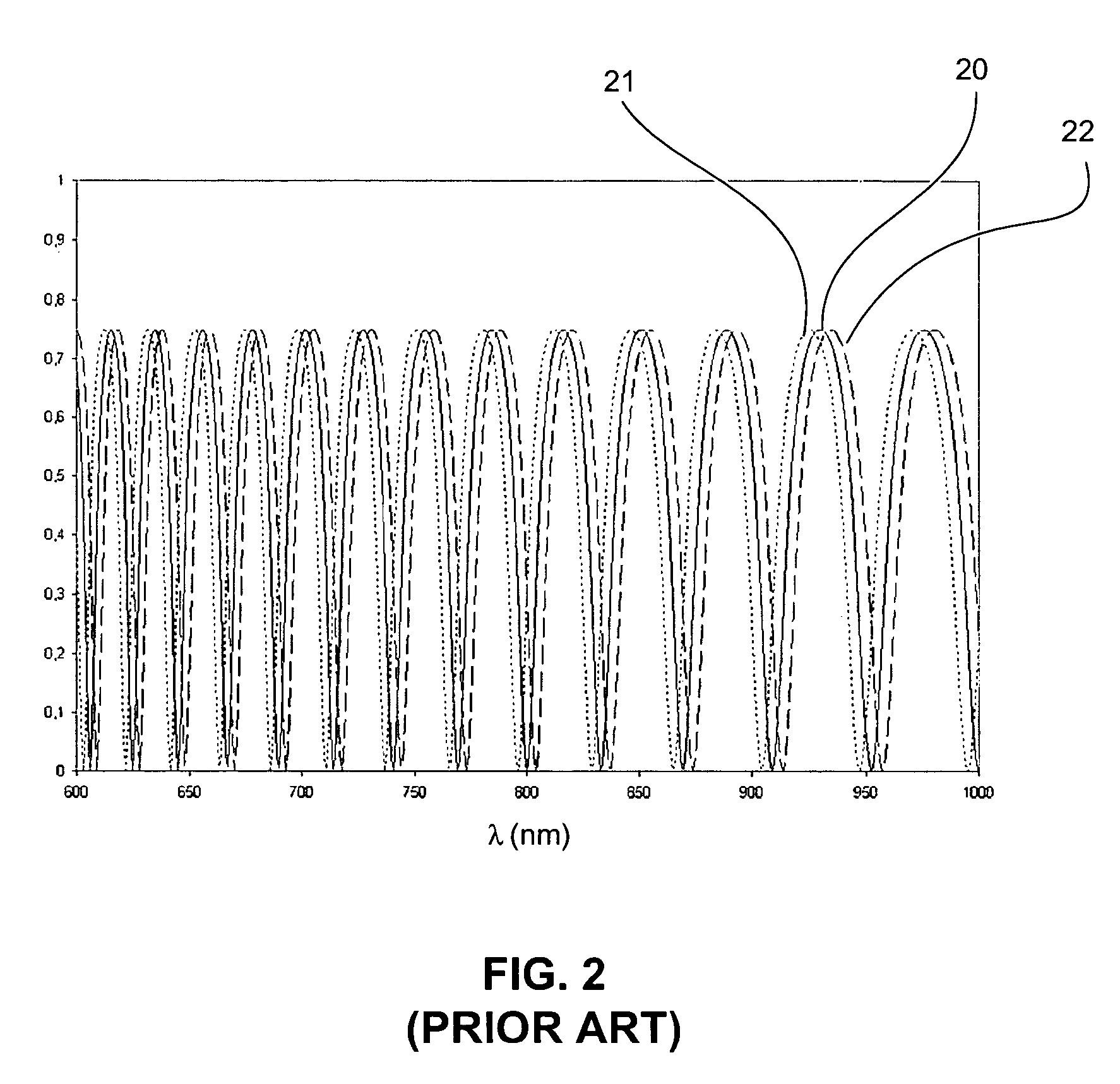Optical MEMS cavity having a wide scanning range for measuring a sensing interferometer
a sensing interferometer and optical mems technology, applied in the field of micro-electromechanical tunable fabryperot demodulators, can solve the problems of inability to reliably test the reliability of intensity-based sensors, gratings require expensive optical demodulators, and high-performance optical demodulators are still too expensive and bulky to compete with conventional electrical sensors. , to achieve the effect of low cost and low finess
- Summary
- Abstract
- Description
- Claims
- Application Information
AI Technical Summary
Benefits of technology
Problems solved by technology
Method used
Image
Examples
first embodiment
of the Present Invention
[0068]FIG. 6 shows a first embodiment 70 of a micro-electromechanical (MEMS) Fabry-Perot demodulating interferometer (MEMS-FPDI) based on the use of silicon micromachining techniques. It comprises a low finesse FP interferometer with a first mirror 71 made by depositing a semi-reflective mirror on the inner surface of a glass substrate 73, and a second mirror 72 made of the inner surface of a silicon diaphragm 74. The second mirror 72 made of said inner surface of the silicon diaphragm can be scanned by applying a voltage between the two electrodes 75, 76, the first electrode 75 being made by depositing a first metal layer on the glass substrate, and the second electrode 76 being made by depositing a second metal layer on the silicon diaphragm. The distance between the two mirrors, and hence the FP cavity length 78, is monitored by measuring the capacitance between said electrodes 75, 76. A layer of SiO2 77 is deposited so as to fully cover the surface of the...
second embodiment
of the Present Invention
[0096]A second preferred embodiment 300 involves the use of four tethers 301 connecting the diaphragm 302 to the silicon substrate 303. FIG. 9 illustrates the internal view of such a diaphragm connected to the silicon substrate with tethers. The natural frequency of such an embodiment can be reduced to 1000 Hz and lower, while also reducing the voltage required to deflect the diaphragm. One method to construct this tether diaphragm is provided herein after.
[0097]A thin silicon diaphragm 303 25 μm thick is temporarily bonded on a glass substrate (handle). The surface of the silicon diaphragm is coated with chrome and with a photoresist. The photoresist and the chrome layers are patterned to etch through the silicon so that all four tethers 301, the center of the diaphragm 302 and the openings 310, 311 for the connecting pads 312, 313 are formed. The total diameter of the diaphragm and tethers is still 6 mm, but the center of the diaphragm 302 is reduced to 4 m...
third embodiment
of the Present Invention
[0099]A third preferred embodiment 80 for reducing the actuation voltage while reducing the size of the diaphragm is described herein after. The third preferred embodiment 80 for the construction of a FPDI is shown in FIG. 10, where the diaphragm 81 is pulled toward the glass cover 82 with a Ziploc-like motion. According to relation (4), the force becomes extremely high when the electrodes 87, 88 are in very close proximity. It is then desirable to bring the electrodes in closer proximity, or at least a portion of the same. The edge of the diaphragm 83 is initially in very close proximity with the glass substrate 84. By applying a voltage, a large electric field is created near the edge 83 of the diaphragm 81, where the separation between the electrodes 87, 88 is minimal. The resulting force is then very high, pulling the edge of the diaphragm 83 in close contact with the substrate. A larger force is subsequently induced toward the center of the diaphragm, as...
PUM
 Login to View More
Login to View More Abstract
Description
Claims
Application Information
 Login to View More
Login to View More - R&D
- Intellectual Property
- Life Sciences
- Materials
- Tech Scout
- Unparalleled Data Quality
- Higher Quality Content
- 60% Fewer Hallucinations
Browse by: Latest US Patents, China's latest patents, Technical Efficacy Thesaurus, Application Domain, Technology Topic, Popular Technical Reports.
© 2025 PatSnap. All rights reserved.Legal|Privacy policy|Modern Slavery Act Transparency Statement|Sitemap|About US| Contact US: help@patsnap.com



